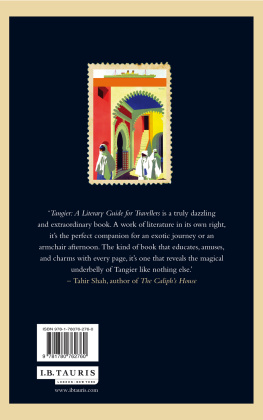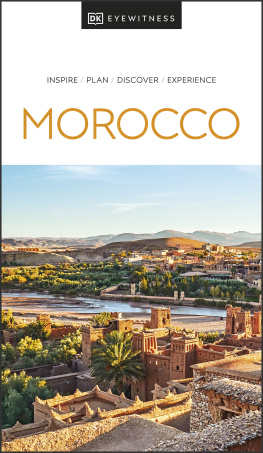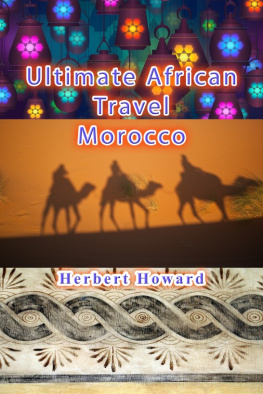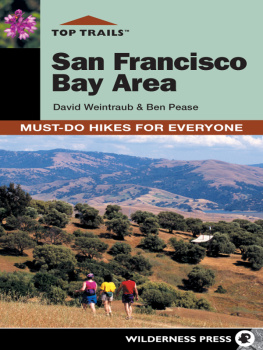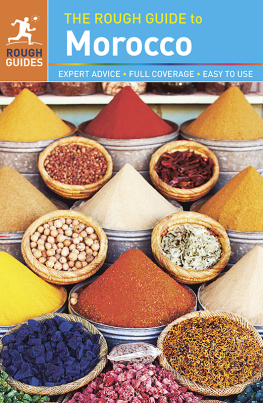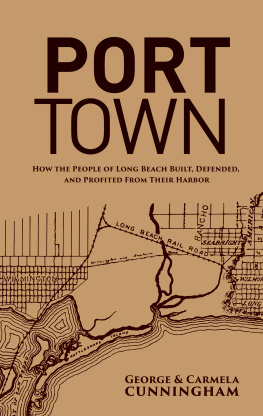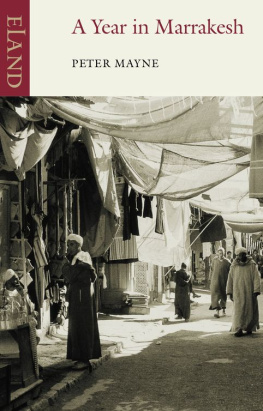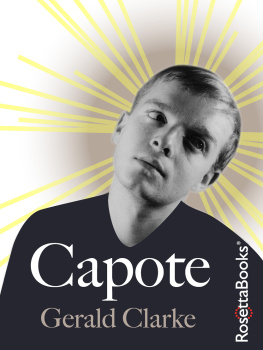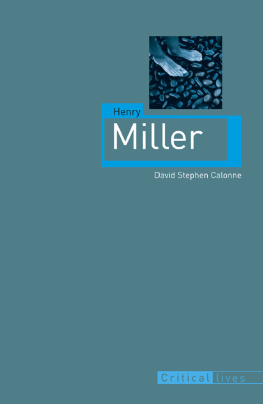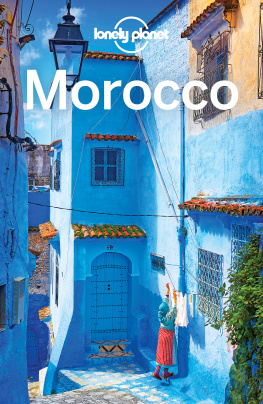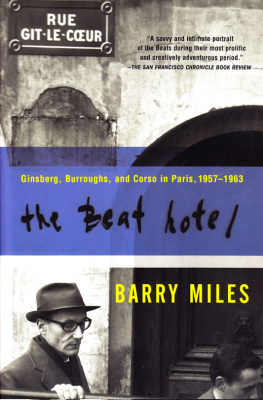Josh Shoemake read English at Columbia. He has lived in Morocco since 1996. He spent three years in Tangier, where he taught literature and formed close friendships with Paul Bowles, Mohamed Choukri and other local artists and writers. He then served for five years as headmaster of The American School of Marrakech and has published stories about Tangier in The Threepenny Review and elsewhere. A memoir of his time in Morocco is forthcoming.
Tangier: A Literary Guide for Travellers is a truly dazzling and extraordinary book. A work of literature in its own right, its the perfect companion for an exotic journey or an armchair afternoon. The kind of book that educates, amuses, and charms with every page, its one that reveals the magical underbelly of Tangier like nothing else.
Tahir Shah
author of The Caliphs House
Tangier
a literary guide for travellers
Josh Shoemake

Published in 2013 by I.B.Tauris & Co. Ltd
6 Salem Road, London W2 4BU
175 Fifth Avenue, New York NY 10010
www.ibtauris.com
Distributed in the United States and Canada
Exclusively by Palgrave Macmillan
175 Fifth Avenue, New York NY 10010
Copyright 2013 Josh Shoemake
The right of Josh Shoemake to be identified as the author of this work has been asserted by him in accordance with the Copyright, Designs and Patents Act 1988.
All rights reserved. Except for brief quotations in a review, this book, or any part thereof, may not be reproduced, stored in or introduced into a retrieval system, or transmitted, in any form or by any means, electronic, mechanical, photocopying, recording or otherwise, without the prior written permission of the publisher.
ISBN: 978 1 78076 276 0
eISBN: 978 0 85773 376 4
A full CIP record for this book is available from the British Library
A full CIP record is available from the Library of Congress
Library of Congress Catalog Card Number: available
Typeset by JCS Publishing Services Ltd, www.jcs-publishing.co.uk
Contents
Illustrations
English Tangier (166184) as portrayed by the Flemish etcher J. Peeters. The view is from Tangier Bay
Cover of the pulpy Two Tickets for Tangier by F. Van Wyck Mason, featuring the indomitable spy Colonel Hugh North (New York, Pocket Books, 1956)
Eclectic literary crowd (from left to right): Mohamed Choukri, Jean Genet, Hassan Ouakrim and Mohamed Zerrad (Genets friend) at Caf de France, Tangier, 1969
The Grand Socco surrounded by the bustle of twenty-first-century life
St Andrews Church, where Walter Harris, among others, is buried
From left to right: Gregory Corso, Paul Bowles, Ian Sommerville, Michael Portman and William Burroughs at Villa Muniria, where Burroughs wrote Naked Lunch , Tangier, 1961
William Burroughs with Brion Gysin and his Dream Machine
Caf Hafa, legendary hangout for Beats, artists, expats and locals dreaming of exile
Photo 1: ACR Edition, Courbevoie/Paris; photos 3 and 6 The Paul Bowles Photographic Archive, Tangier; photo 7 reproduced courtesy of Charles Gatewood.
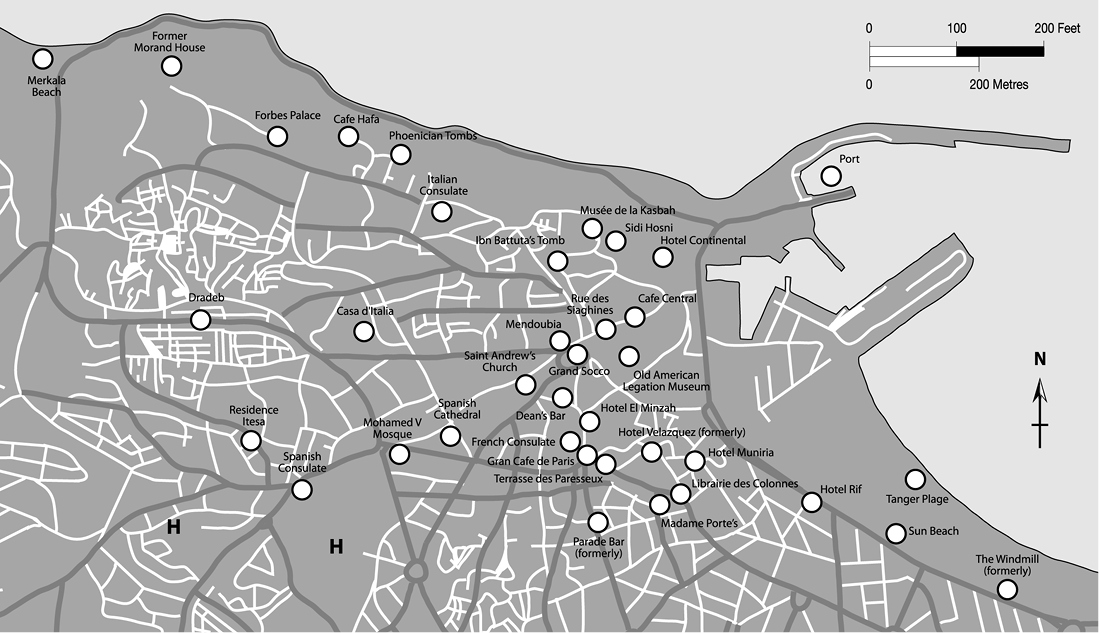
Central Tangier
For a more complete digital map, please visit www.joshshoemake.com/maps
Introduction
The Edge of the Known World
You can be anyone in Tangier. You can remake yourself, rewrite your backstory, reform or deform, indulge your subconscious, cultivate nemeses or simply start anew. Tingis, Tanja, Tanger, Tangiers, Tangier even the city takes pseudonyms. It is an edge city, caught between worlds, at the border between east and west, between north and south. Stand at the walls of the Kasbah atop the medina, and you are at the northernmost tip of Africa, just 15 kilometres from Europe across the Strait of Gibraltar. You overlook both the Mediterranean and the Atlantic, and in the distance rise the Pillars of Hercules Gibraltar and Jebel Musa which Plato, in his Timaeus , called the edge of the known world, beyond which was the lost kingdom of Atlantis.
You could also call it Babel, the city God cursed for building its tower too close to heaven. His punishment doomed its inhabitants to dozens of mutually incomprehensible languages, and walking down the Boulevard Pasteur on a sunny day, with light fracturing through the air and the bay curving into the distance, you can imagine that Tangier was once, a long time ago, too close to heaven. Over the centuries, however, its fallen residents have learned to understand one another. The borders between languages have blurred, and a waiter will welcome you in perfect French, a cry in Arabic will ring out down a street, a taxi driver will speak a formal English worthy of Henry James, and everywhere men shout in Spanish at the futbol on caf televisions.
Founded in the fifth century bc , Tangier has always been a crossroads of cultures, ruled by Carthaginians, Phoenicians, Romans, Arabs, English, Spaniards, and then in the mid-twentieth century by European powers as a loosely policed International Zone. Each wave of foreigners has added layers to the city, and as you walk through its winding streets today, you will often come upon a place where the layers have been peeled back, or have rotted away, and you may encounter a sheep herder from Ibn Battutas fourteenth century, or a mischievous beggar boy straight out of Genet, or an anachronistic gentleman in a seersucker suit who has surely wandered off from a story by Paul Bowles. Luminous sea light glances off the citys white walls, and it is not unusual to imagine that you have slipped into a fiction. The Interzone, as William Burroughs called the place, has always attracted spies, outlaws, outcasts and, well, writers , working out at the edge of literary forms and blurring artistic borders.
Tangiers literary history is unlike any the world has known, or may ever know again. What can be said of the citys historically eccentric inhabitants can also be said of its literature: it escapes from rules, assumptions, conventions and morality. The citys main artistic figures cut ties with any notion of home and challenged themselves to create new kinds of fictions that they might step into and actually inhabit. They made experiments of themselves and travelled out to the edges of their own interior limits, using drugs, drink and unconventional sexuality as creative tools. The list of edge writers drawn to the city is long; among them are Ibn Battuta, Samuel Pepys, Alexandre Dumas, Mark Twain, Edith Wharton, Walter Harris, Jean Genet, Paul and Jane Bowles, William Burroughs, Brion Gysin, Alfred Chester, Joe Orton and Mohamed Choukri. For much of the twentieth century, Paul Bowless small apartment up beyond the Mohamed V Mosque was the centre of it all. Make a list of the most daring writers over the last century, and most of them spent time with Bowles in Tangier: Tennessee Williams, Patricia Highsmith, Jack Kerouac, Truman Capote, Gore Vidal, Allen Ginsberg the list goes on. The outlaw originality of the work they produced is astonishing, most notably in two books actually written in the city: Bowless The Sheltering Sky (1949) and Burroughss Naked Lunch (1959).
That these experiments in living and writing occurred so openly in a Muslim country is another unusual dynamic that is a credit to Tangiers sophisticated natives, and to their history of living in several worlds at once, which has given them a wry, seen-it-all sense of humour and a sympathy for the individual. Tangiers social history also sheds a more complex light on the twenty-first-century clash between Islam and the West. If our contemporary commentators were to spend an afternoon sitting in a Tangier caf (perhaps Caf Hafa, up on the cliffs overlooking the Strait and filled with ghosts from the past), their black-and-white opinions would suddenly seem woefully simplistic. Tangier defies definitions. It must be lived, and felt, to be understood, and so this book is designed as a stroll through the past, from neighbourhood to neighbourhood, through streets of amphibious colours, indefinable smells, cacophonous sounds, and stories, stories somebodys always telling a story. Truth or fiction? Never mind. Theres not much difference here.

